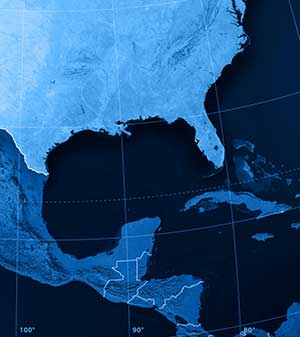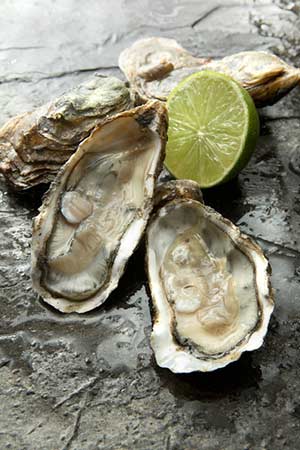victims for over 25 years.
Vibrio Vulnificus: How to Avoid This Flesh-Eating Disease
I bet that headline grabbed you! While I am probably best known around Denver as a personal injury attorney who helps victims of car or motorcycle accidents, I also have developed a national practice as an attorney who helps victims of Vibrio vulnificus.
What is Vibrio vulnificus?
Let’s just short-hand it to “Vibrio,” shall we?
Vibrio is, literally, a flesh-eating disease that leads to some of the worst disfigurement I’ve ever seen. But the amputations that result from Vibrio are still preferable to death, which is another very real risk of Vibrio.
Where is Vibrio Vulnificus Found?
Vibrio is typically caught by people who eat raw oysters from the Gulf of Mexico, but I’ve seen cases in people who ate them as far north as Delaware. If you eat an oyster that contains the Vibrio vulnificus bacteria, you have a 50% chance of dying. If you do live, you will probably lose both of your legs and maybe your arms.
In 2016, 46 people contracted Vibrio vulnificus in the waters off of Florida’s coast, and 10 of those people died within days of being infected.
More recently, however, there also have been cases of people who contracted the disease just by touching the waters of, or swimming in, the Gulf of Mexico.
Over this past summer, a 70-year-old woman from Mississippi contracted Vibrio while fishing in the Gulf. She said she reached into a bait bucket of live shrimp and pricked the back of her hand. Her husband said it was only three hours before she was “deathly sick.” She was in the hospital over two weeks and underwent multiple surgeries to save her hand. But she lived.

(All shellfish can carry the bacterium, but since people rarely eat any raw shellfish except oysters, shrimp are not often discussed when the disease comes up.)
More recently, I’ve also heard cases of people with fresh tattoos contracting the disease when they ignored orders to avoid swimming and dove into the Gulf of Mexico. In June 2017, a 31-year-old man swam in the Gulf of Mexico five days after getting a new tattoo on his calf. Tattoo artists will advise that people should avoid soaking new ink — even in a bath — and definitely not to go swimming. Very quickly after his swim, he got a fever, chills and a rash near his new tattoo.
CNN reported:
“Within a few hours, things had progressed pretty quickly,” said Dr. Nicholas Hendren, an internal medicine resident at University of Texas Southwestern Medical Center. “There’s darkening skin changes, more bruising, more discoloration, what we call bullae — or mounds of fluid that were starting to collect in his legs — which, of course, is very alarming to anyone, as it was to us.
“He was already in the early stages of septic shock, and his kidneys had already had some injury,” Hendren said. “Very quickly, his septic shock progressed from … early stages to severe stages very rapidly, within 12 hours or so, which is typical for this type of infection.”
The man fought for his life for two months, but he ultimately died from Vibrio and septic shock.
(If you want an idea of how painful Vibrio can be, see the CNN story about this man. Warning: the pictures are graphic. But truly, they are typical for the poor people who contract this disease.)
The oyster industry knows about this problem and fights the very simple remedies to keep people safe.
Vibrio moves fast: In 2016, 46 people contracted Vibrio vulnificus in the waters off of Florida’s coast, and 10 of those people died within days of being infected. The CDC estimates that this infection causes 80,000 illnesses and 100 deaths every year in the United States.
The CDC report on Vibrio vulnificus states:
“In the USA, most serious infections appear to occur with the ingestion of raw oysters along the Gulf Coast, as nearly all oysters are reported to harbor V. vulnificus during the summer months and 95% of cases were related to raw oyster ingestion.”
Vibrio Vulnificus Prevention
My advice:
- Never (ever, never, ever) eat raw or undercooked oysters.
- Wear gloves when handling raw shellfish.
- Follow safety instructions after receiving a new tattoo.

The CDC adds:
- Always wash your hands with soap and water after handling raw shellfish.
- Avoid contaminating cooked shellfish with raw shellfish and its juices.
- Stay out of brackish or salt water if you have a wound (including cuts and scrapes), or cover your wound with a waterproof bandage if there’s a possibility it could come into contact with brackish or salt water, raw seafood, or raw seafood juices. Brackish water is a mixture of fresh and seawater. It is often found where rivers meet the sea.
- Wash wounds and cuts thoroughly with soap and water if they have been exposed to seawater or raw seafood or its juices.
- If you develop a skin infection, tell your medical provider if your skin has come into contact with brackish or salt water, raw seafood, or raw seafood juices.
If You Have Lost Someone to Vibrio, Or If You Fought Vibrio and Lived
Call me. Casting humility aside, there are very few attorneys in the country who understand Vibrio vulnificus. In that small population of attorneys, I am a leader.
My first Vibrio case came to me many years ago through a friend who called and said his buddy was in the hospital, possibly from poisoning he received from an oyster. When I arrived at the hospital, I was utterly shocked at what I found: this poor man was fighting for his life because the bacteria were attacking his internal organs, but it had also attacked both of his legs. Imagine both his legs from the knees down as black as shoe leather because they had already died.
Ultimately, the hospital saved the man’s life, but he lost both legs above the knees. I took his case and we sued everyone who touched the oysters: harvesters, processors, shippers, wholesale sellers and the restaurant. We were able to settle and secured a large sum for the victim.
Here’s the really upsetting part: the oyster industry knows about this problem and fights the very simple remedies to keep people safe. Essentially, there are ways to pasteurize the oysters that kills the bacteria. Yet, the oyster industry still fights the simple cure for this awful risk.
I’m glad Vibrio is a relatively rare disease, but, because of its severity, I’m sad that anyone must suffer through so much pain. If you know someone with Vibrio or someone who died from the disease and you need help with a legal case, please contact me today.
Free Consultation
Search For
Recent Articles
- Pedestrian Injured in Traffic Incident Near Hampden
- Careless Driving Leads to Serious Injury in Denver’s Speer Neighborhood
- Careless Driving Leads to Serious Injury in Montclair Incident
- Bicycle and Car Collision at Colfax and Emerson in Denver
- Early Morning Collision in Capitol Hill Leaves One Seriously Injured
Categories
- Arvada
- Aurora
- Auto Accident eBook
- Auto Insurance
- Bicycle
- Bicycle/Motorcycle Accidents
- Bodily injury
- Car accidents
- Centennial
- Colorado
- Colorado Legislature
- community
- Denver
- Denver Metro Motor Vehicle Accidents
- distracted driving
- DUI Accidents
- Englewood
- Events
- Flood Insurance
- Fort Collins
- Highlands Ranch
- Hit and Run
- In The News
- insurance companies
- Lakewood
- Littleton
- Marijuana DUI
- Motorcycle Accidents
- Motorcycle Insurance
- Motorcycle Law eBook
- Motorcycles
- Newsletter
- Pedestrian
- Personal Injury Law
- Press Release
- Safe Driving
- Safety
- Scooters
- technology
- Tips
- Uncategorized
- vibrio vulnificus bacteria
- Videos
- Westminster
- Winter Driving
- Wrongful Death
Archive
- July 2025
- June 2025
- May 2025
- April 2025
- March 2025
- February 2025
- January 2025
- December 2024
- November 2024
- October 2024
- September 2024
- August 2024
- July 2024
- May 2024
- April 2024
- March 2024
- February 2024
- January 2024
- December 2023
- November 2023
- October 2023
- September 2023
- August 2023
- July 2023
- June 2023
- May 2023
- April 2023
- March 2023
- February 2023
- January 2023
- November 2022
- September 2022
- April 2022
- March 2022
- February 2022
- January 2022
- December 2021
- November 2021
- October 2021
- September 2021
- August 2021
- July 2021
- June 2021
- May 2021
- April 2021
- January 2021
- December 2020
- November 2020
- October 2020
- September 2020
- August 2020
- July 2020
- June 2020
- May 2020
- April 2020
- March 2020
- February 2020
- January 2020
- December 2019
- November 2019
- October 2019
- September 2019
- August 2019
- July 2019
- June 2019
- May 2019
- March 2019
- February 2019
- January 2019
- December 2018
- November 2018
- October 2018
- September 2018
- August 2018
- July 2018
- June 2018
- May 2018
- April 2018
- March 2018
- February 2018
- January 2018
- December 2017
- November 2017
- October 2017
- September 2017
- August 2017
- July 2017
- June 2017
- May 2017
- April 2017
- March 2017
- February 2017
- January 2017
- December 2016
- November 2016
- October 2016
- September 2016
- August 2016
- July 2016
- June 2016
- May 2016
- April 2016
- March 2016
- February 2016
- January 2016
- December 2015
- November 2015
- October 2015
- September 2015
- August 2015
- July 2015
- June 2015
- May 2015
- April 2015
- February 2015
- November 2014
- October 2014
- September 2014
- July 2014
- June 2014
- May 2014
- April 2014
- March 2014
- February 2014
- January 2014
- October 2012
- September 2012
- August 2012
- July 2012
- February 2012
- March 2011
- October 2010